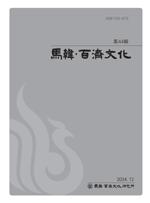- 영문명
- The Construction of Buddhist Temples in the Three Kingdoms and the Transformation of Capital City Landscapes
- 발행기관
- 원광대학교 마한백제문화연구소
- 저자명
- 이병호(Byong Ho Lee)
- 간행물 정보
- 『마한백제문화』제45집, 6~26쪽, 전체 21쪽
- 주제분류
- 인문학 > 역사학
- 파일형태
- 발행일자
- 2025.06.30
5,320원
구매일시로부터 72시간 이내에 다운로드 가능합니다.
이 학술논문 정보는 (주)교보문고와 각 발행기관 사이에 저작물 이용 계약이 체결된 것으로, 교보문고를 통해 제공되고 있습니다.

국문 초록
이글은 한국 고대 삼국에서 高塚 古墳이 소멸한 다음 불교 寺院이 등장하는 과정과 확산하는 과정을 시론적으로 검토하였다. 삼국은 대규모 사원과 불탑, 불상을 경쟁적으로 조성하면서 기존의 고분축조와 다른 새로운 도성 경관을 만들어 갔다. 이 글에서는 지금까지 축적된 연구 성과를 바탕으로 고구려․백제․신라의 불교 수용 과정에서 사원이 처음 조영되고 확산되는 과정을 정리하였다.
Ⅱ장에서는 삼국의 불교 수용 과정과 처음으로 사원이 조영되는 모습에 대해 검토하였다. 고구려의省門寺나 伊弗蘭寺는 국내성 부근에 건립되었을 것으로 추정되지만 관련되는 자료가 없다. 다만 古城 村 1호 사원지의 사례는 지방 사원의 존재 가능성을 시사하고 있다. 백제는 385년 漢山에 佛寺를 건립하는데 이와 관련하여 몽촌토성에서 발굴된 版築臺地가 주목된다. 공주 반죽동에서 발견된 大通寺址 관련 유물은 백제 본격적인 가람 조영의 단서가 되고 있다. 신라 興輪寺의 경우 경주공고에서 발견된기와류에 의해 백제-남조 사원과의 관련성이 확인되었다.
Ⅲ장에서는 백제와 신라 도성에서 사원이 확산되는 과정을 검토하였다. 6세기 전반 백제와 신라는梁 武帝를 모델로 한 佛敎 治國策을 실시하고, 백제 정림사지와 신라 황룡사지 같은 國家大寺를 조영한다. 이 사원들은 도성의 핵심 지역에 위치하며 왕권을 상징하는 랜드마크가 되었다. 삼국은 舍利를활용한 다양한 佛事를 벌였고, 불탑에서 출토된 각종 供養品들은 이를 잘 보여주고 있다. 고구려 정릉사지나 백제 능산리사지의 경우는 왕릉과 결합된 陵寺와 같은 사원의 사례이며, 익산 제석사지나 부소산사지, 신라 內帝釋宮으로도 불린 天柱寺의 사례는 內佛堂의 모습을 보여준다. 도성에 조영된 대규모사원들은 국왕과 왕실에 神聖性을 부여하고, 불교적 聖所라는 상징성을 갖게 하였다.
영문 초록
This study provides a preliminary examination of the process through which Buddhist temples emerged following the decline of the Gaozuka Kofun in the ancient Three Kingdoms of Korea. As the Three Kingdoms constructed large-scale temples, pagodas, and Buddhist statues in competitive efforts, they developed new capital city landscapes distinct from the earlier construction of burial mounds. Based on accumulated research findings, this paper outlines the initial establishment and proliferation of Buddhist temples during the adoption of Buddhism in Goguryeo, Baekje, and Silla.
In Chapter II, the process of accepting Buddhism in the Three Kingdoms and the appearance of temples being contrasted for the first time were reviewed. In Goguryeo, temples such as Seongmun Temple and Ibeuran Temple are presumed to have been built near Gungnae Fortress, although no related evidence has been discovered. However, the example of the first temple site at Goseong Village suggests the possible existence of provincial temples. In Baekje, a Buddhist temple was built in Hansan in 385 AD, with the rammed earth platform unearthed at Mongchon Fortress drawing significant attention. Artifacts associated with the site of Daetongsa Temple discovered in Banjuk-dong, Gongju, provide clues to Baekje's systematic construction of Buddhist temple complexes. In Silla, tiles found at Gyeongju Technical High School reveal a connection between Heungnyun Temple and Baekje-Southern Dynasties influences.
Chapter III examines the expansion of temples within the capital cities of Baekje and Silla. In the early 6th century, both kingdoms implemented Buddhist statecraft policies modeled on Emperor Wu of the Liang Dynasty. This led to the construction of national temples such as Jeongnimsa Temple in Baekje and Hwangnyongsa Temple in Silla. Located at key points within their respective capitals, these temples became symbolic landmarks representing royal authority. The Three Kingdoms actively engaged in various Buddhist rituals centered on relics, with offerings unearthed from pagodas providing vivid evidence of these practices. Examples include temple sites like Jeongneungsa Temple in Goguryeo and Nungsanri Temple in Baekje, where temple complexes were integrated with royal tombs, illustrating the concept of the “tomb-temple”. Other notable cases, such as Jeseoksa Temple and Busosansaji Temple in Baekje, and Cheonjusa Temple, also known as Naeteiseokgung, in Silla, highlight the emergence of inner sanctuaries. These large-scale temples constructed in capital cities conferred sanctity upon the kings and royal families, transforming the capitals into Buddhist sacred spaces imbued with religious symbolism.
목차
Ⅰ. 머리말
Ⅱ. 삼국의 불교 수용과 사원 조영의 시작
Ⅲ. 백제·신라 도성에서 사원 조영의 확산
Ⅳ. 맺음말
참고문헌
해당간행물 수록 논문
참고문헌
교보eBook 첫 방문을 환영 합니다!

신규가입 혜택 지급이 완료 되었습니다.
바로 사용 가능한 교보e캐시 1,000원 (유효기간 7일)
지금 바로 교보eBook의 다양한 콘텐츠를 이용해 보세요!




